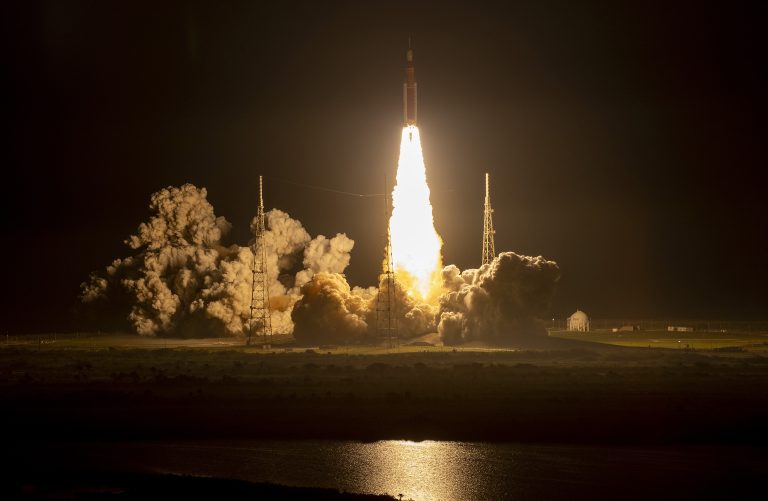According to a new audit from NASA’s Inspector General, NASA’s Space Launch System (SLS) rocket, which intends to take astronauts to the moon later this decade, is $6 billion over budget and six years behind schedule and the space agency says things could get worse.
Spending on the Artemis Moon Program is projected to hit $93 billion by 2025, including the $23.8 billion already invested in the project through 2022. According to the report, that spend represents “$6 billion in cost increases and over six years in schedule delays above NASA’s original projections.”
The SLS, which launched for the first time in November 2022, reaches orbit by utilizing four RS-25 engines, as well as 16 engines that were salvaged from NASA’s retired Space Shuttles.
Once these engines reach the end of their life, NASA intends to switch to RS-25E engines, built by Aerojet Rocketdyne, that are reportedly 30 percent cheaper and 11 percent more powerful. Northrop Grumman will also provide solid rocket boosters.
The salvaged engines were supposed to reign in costs, however this outcome has failed to materialize.
Success
You are now signed up for our newsletter
Success
Check your email to complete sign up
“These increases are caused by interrelated issues such as assumptions that the use of heritage technologies from the Space Shuttle and Constellation Programs were expected to result in significant cost and schedule savings compared to developing new systems for the SLS,” the audit says, adding that, “However, the complexity of developing, updating, and integrating new systems along with heritage components proved to be much greater than anticipated.”
The largest issue driving the cost overrun is the booster contract, which has ballooned from $2.5 billion to $4.4 billion since the Artemis mission was announced. The booster contract is also being blamed for adding five years to the schedule.
READ MORE:
- Environmental Groups Sue FAA Over SpaceX License After Repeated Launch Failures
- SpaceX Facilities Littered With Damage Following Historic Launch of Starship
- NASA’s Giant US Moon Rocket Debuts on Launchpad
According to the Inspector General, another culprit is “cost-plus” contracts, which are allowing suppliers to inflate budgets, something that would not be an issue had NASA entered into fixed-price contracts.
The audit recommends that NASA shift towards fixed-price contracts, which NASA management has agreed to along with seven other recommendations.
NASA originally had a goal of returning to the moon by 2020 and eventually making the trip to Mars, however the Obama administration canceled the project — then known as the Constellation program — a move that was met with widespread condemnation.
The NASA Authorization Act of 2010 however, mandated construction of the SLS, along with the repurposing of existing technology, contracts and other infrastructure from Constellation.















